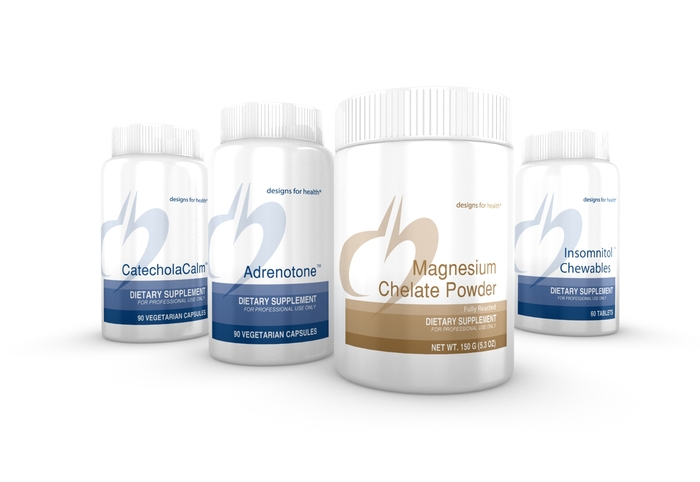|
Want to know an easy and inexpensive way to become and stay healthy? Get with some trees. Notice them, appreciate them, or simply be near them.
A recent study found that the higher the density of trees, even in photographs, the greater the reduction in stress. People experienced lowered stress even if the trees were located in an urban area.(1) Studies have also shown that stress can influence the onset of chronic diseases like cancer and heart disease, as well as depression and anxiety.(2) We also know that even if there is not a lot we can do to change our stressors, activating our parasympathetic nervous system (the one that allows us to relax and restore), can mitigate stressful experiences and decrease their impact. Connecting with nature is one way to do that. Spending time in nature is an enjoyable and easy way to support our health and well-being. While, as studies show, more trees = less stress, being mindfully present with even one tree or plant can create a sense of calm and support our health. This is a great option if we live or work in an urban environment. I’ve experienced first-hand the beneficial effect being in nature has for me, including calming my nervous system, enhancing my outlook on life, amplifying creativity, and increasing my sense of inner peace and connection with all of life. I see the powerful effect that connecting with nature has for others too, and it is my joy to be with them in the experience. That’s why I’m excited to host the Nourish in Nature Experience in the San Francisco Bay Area on Oct. 19th. It’s a 2-hour opportunity to experience first-hand the healing power of nature through hiking, meditation, being with beautiful Redwood trees and healthy snacks. I’d love for you to join us. Check out the details here. Resources:
2 Comments
 If you’ve got weight that just keeps holding on, or you’ve lost some weight but hit a plateau, handling your body’s toxic load may be a missing link. First, a little background on what I mean about toxins and toxic load, and then I’ll describe three ways toxins might be causing belly fat to hold on, or keeping you heavier than you’d like to be. There are about 90,000 in circulation, and new ones coming on to the market daily. Research has shown that we’re born with toxins – an Environmental Working Group study showed more than 200 chemicals in newborns’ cord blood, even among mothers who described themselves as living healthy lifestyles. Chemicals like BPA, phthalates, flame retardants, pesticides, air pollution and more can disrupt our endocrine system and make it hard to maintain a healthy metabolism. It’s important to understand how toxins contribute to excess fat. But before you just give up entirely, hang with me, as there are actions you can take to decrease your toxic load and support a healthy weight. Toxins = Hormone Imbalances = Excess Fat This topic is huge, but here are a few ways that toxins can disrupt your hormones. Toxins can be endocrine disruptors. Bisphenol A (BPA, commonly found in plastics and cash register receipts) and PVC are examples. One way this happens is if you’ve got more toxins in your body than your liver can clear, the toxins can set off hormone imbalances. Your reproductive hormones are one system that can get out of balance, creating estrogen dominance for example. When our estrogens are out of whack (men or women) belly fat can seem to stick to us, and it can also be much harder to lose weight. Toxins can also contribute to thyroid dysfunction, as chemicals can bind to thyroid receptors, displacing thyroid hormones that are needed for proper function. Flame retardants, commonly found in furniture, are among the worst offenders in affecting thyroid health. An imbalanced thyroid can result in sluggish metabolism that makes it harder to rid ourselves of fat. One of my mentors, Dr. Sara Gottfried, feels that terms like “endocrine disrupters” and “xenobiotics” don’t go far enough in explaining the impact that toxins can have on our bodies. She refers to toxins as “metabolism blockers,” which seems appropriate to me. Toxins = Inflammation and Insulin Resistance = Excess Fat Toxins are implicated in both inflammation and insulin resistance, and both can lead to added weight. A study in the journal Environmental Health Perspectives, found that Persistent Organic Pollutants (POPs) lead to insulin resistance. When we have insulin resistance, our blood sugar spikes as insulin’s role of shuttling the glucose into the cells for fuel is impaired. Instead of allowing a potentially dangerous level of glucose to circulate, the body responds by storing it as additional fat. The extra fat usually shows up around our bellies. Insulin resistance creates inflammation. Fat cells (which often “host” toxins – see below), produce inflammation. Toxins cause the immune system to respond, which creates inflammation. Inflammation causes stress inside the body, raises Cortisol and blood sugar levels (which promotes weight gain), and is an underlying cause in many diseases. Toxins = More Fat Cells = Excess Fat When our bodies have too many toxins and we’re not releasing them through the liver, skin, urine and feces, the body creates fat to protect our organs from the toxins. This toxin-laden fat can more persistently hang on because the body is trying to protect our organs from harm. When we are able to lose fat, toxins that were stored in the fat begin circulating in our bodies. If our livers and other detoxification channels can’t keep up with clearing those toxins, we’ll begin to feel unwell. Our bodies will also then make more fat to protect us and the cycle begins again. What to Do? Learn why detoxifying is an excellent first step in jump-starting weight loss, or essential to good health and keeping weight off if you’ve recently lost it…join me May 13th at 5 p.m. PST for the Health Re-Boot Workshop – it’s live and virtual, and costs you nothing. We’ll explore this topic, provide tips to start detoxifying ASAP and more. Check it out here… You can also check out my Quick Cleanse, which begins May 27th at 5 p.m. PST. I’ll share some info on the Quick Cleanse during the Health-Reboot workshop, and offer special bonuses to workshop participants who sign up for Quick Cleanse. Resources: Environmental pollution and diabetes: a neglected association. http://www.ncbi.nlm.nih.gov/pubmed/18294985 The Complex Picture of Chemical Disruption of Thyroid Hormone Function. http://www.altmedrev.com/publications/14/4/326.pdf Chemical Sensitivity. http://www.aaemonline.org/chemicalsensitivitypost.html https://www.womentowomen.com/insulin-resistance/insulin-resistance-what-is-it-and-how-we-can-heal/ http://www.scientificamerican.com/article/newborn-babies-chemicals-exposure-bpa/ http://drhyman.com/blog/2012/02/20/how-toxins-make-you-fat-4-steps-to-get-rid-of-toxic-weight/ The Chemical Tributyltin (TBT) Stimulates the Production of Abnormal Fat Cells Toxicology. Carfi’ M, Croera C, Ferrario D, Campi V, Bowe G, Pieters R, Gribaldo L.Toxic Effects of Phthalates and Parabens Altern Med Rev. Crinnion WJ. How Bisphenol A Promotes Obesity Mol Cell Endocrinol. Rubin BS, Soto AM. Many Chemicals Accumulate in Our Fat Altern Med Rev Crinnion WJ. A Theory of How Chemicals Cause Obesity Curr Opin Endocrinol Diabetes Obes. Grün F. Chemicals Induce New Fat Cell Formation Endocrinology. Grün F, Blumberg B. PCBs Induce New Fat Cells to Form While Increasing Inflammation Environ Health Perspect Arsenescu V, Arsenescu RI, King V, Swanson H, Cassis LA. Chemicals Stimulate the Production of Abnormal Fat Cells Biochem Pharmacol. Moreno-Aliaga MJ, Matsumura F. Chemicals Damage Glucose Metabolism of Fat Cells J Biochem Mol Toxicol. Olsen H, Enan E, Matsumura F. Chemicals Increase Risk for Type 2 Diabetes and Obesity Obesity (Silver Spring). Dirinck E, Jorens PG, Covaci A, Geens T, Roosens L, Neels H, Mertens I, Van Gaal L. The Complex Picture of Chemical Disruption of Thyroid Hormone Function Altern Med Rev. Patrick L. Chemicals Promote Hypothyroid as Well as Hyperthyroid States Endocrine. Mastorakos G, Karoutsou EI, Mizamtsidi M, Creatsas G. Weight Gain in Response to Environmental Toxins Environmental Health Perspectives 1.Michelle A. Mendez, Raquel Garcia-Esteban, M?nica Guxens, Martine Vrijheid, Manolis Kogevinas, Fernando Go?i, Silvia Fochs, Jordi Sunyer. |
Dawn Preisendorf,
|
Location6536 Telegraph Ave. Suite A101
Oakland, CA, 94609 Work with us in Oakland, near Berkeley, or anywhere via Zoom. |
|







 RSS Feed
RSS Feed